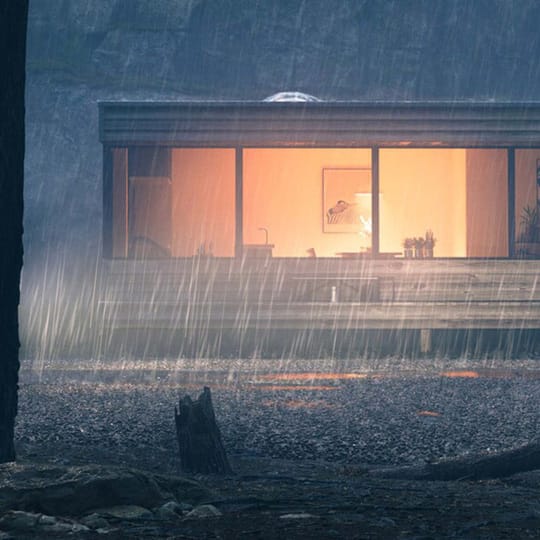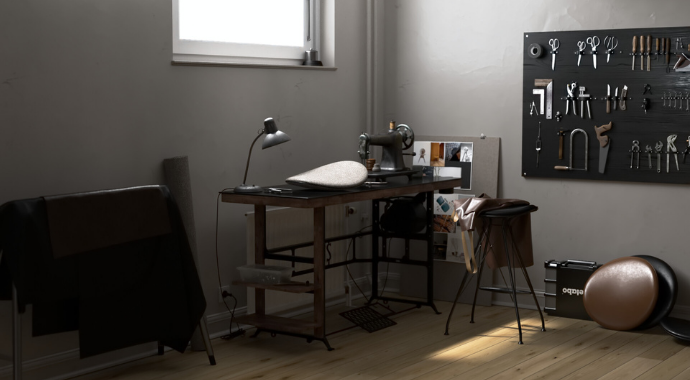Discover Emil Rasmussen's stunning 3D work created with V-Ray for 3ds Max, dive into his journey as a 3D apprentice, and learn about his creative process.
With his keen eye for detail and passion for design, Emil Rasmussen, the talented Danish student, and apprentice at the furniture design company Fritz Hansen enjoys creating truly immersive and lifelike visuals that captivate the viewer’s eye. In this blog post, we'll delve deeper into Emil's work and explore how he uses V-Ray for 3ds Max to bring his creative visions to life.
If you'd like to be featured on our blog, take the first step by submitting your best render to us. We look forward to seeing your work!
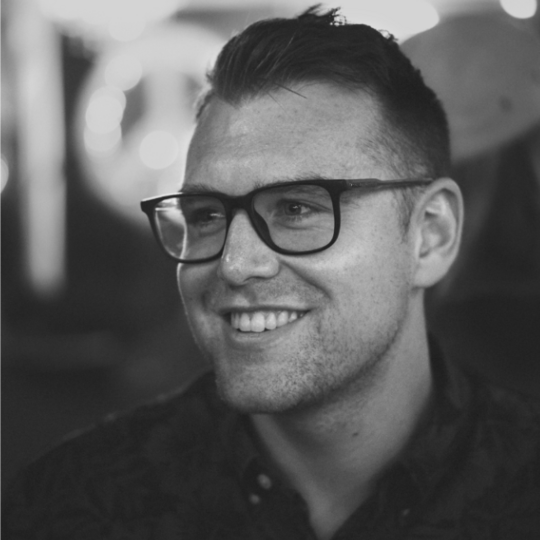
About Emil
Emil Rasmussen is a Danish student studying 3D art and an apprentice at Fritz Hansen. Aside from making pretty pixels, he enjoys taking photos outdoors, getting poor-quality sleep in tents, and cooking over bonfires.
Tell us a little about your artistic journey so far.
My journey started with focusing almost solely on the technical side of things.
Diving into the world of 3D can be quite overwhelming at first but also super exciting. In the beginning, you constantly break down technical barriers that open your eyes to new solutions and projects. I think my projects back then were based on what I felt comfortable doing and with my recent learnings. I also had to move past my self-criticism, I was overly critical of my work even very early on in the process, and I was constantly looking for external validation and would scrap projects if I didn't get any.
Today I pick projects more based on interest and mood rather than what technical barriers they might pose, and I'm also more confident in my work. Winning the Rookie Awards helped me gain more trust in my ability, but even then, I still haven’t done a project that I'm 100% proud of, but I think that's just how I am, and it’s what motivates me to always do better.
How did you decide to pursue an education in 3D? What are your impressions of the program?
I was just blown away the first time I saw a photorealistic render. I couldn’t believe that it was not a real photo, but looking back at that very same render today with my trained eyes, it seems less impressive, which I find a little amusing. After trying it myself and making quite an awful render of my room at my parent's house, I decided that this is the career I want to pursue.
The program at 3D College Denmark is great. It’s quite lenient in the way that there isn’t really a huge number of things that we have to go through and that it's expected that the student takes charge of their learning with guidance from the teachers. That also allows us to develop in many different directions, and it’s interesting and inspiring to see how the other students pursue careers in games and VFX.
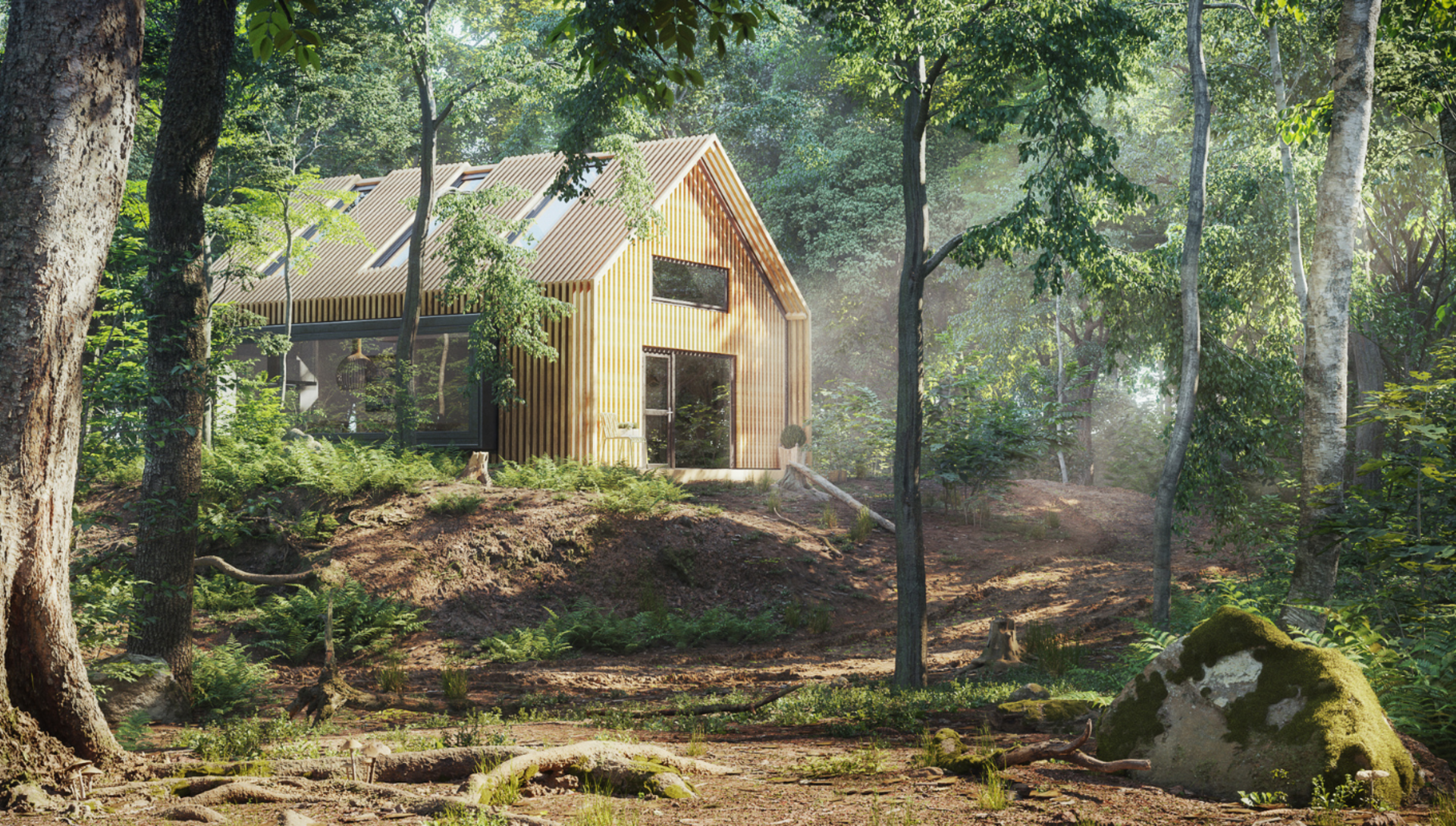
What have you learned so far in terms of soft skills?
The school has taught a good culture of giving and receiving feedback. Every Friday, we usually have a show and tell, where we share our work with the rest of the class and the teacher to receive feedback and ideas. It didn’t come naturally to me, and I had to learn to swallow my pride sometimes while receiving feedback and not fall in love too much early on with something in your render, so much so that you are too stubborn to try and change it. I have become better at that but I will have to work more on that.
My apprenticeships taught me more about working as a team and time management. Before, I would usually spend an unreasonable amount of time on details that wouldn't be seen anyway.

How important is entering design challenges to your growth as an artist? What was your last entry?
All I can say is that it made a huge difference for me, and if you’re like me, a very competitive-minded person who is usually not satisfied with being second best or third, it can be a huge boost to motivation. Remember to have realistic expectations; otherwise, it might bring you down. It took me a couple of attempts to win the Rookies awards, and each time I participated, I felt more motivated to do better. There is nothing to lose, and you get a chance for industry professionals to have a look at your work.
The last time I participated in a CG challenge was the Chaos Illumination student challenge. It was quite fun! Since then, I haven't had time to participate in much. Between hectic school assignments and apprenticeships, it’s hard to find time, but I'm looking to find my next challenge to join once I have graduated this summer!
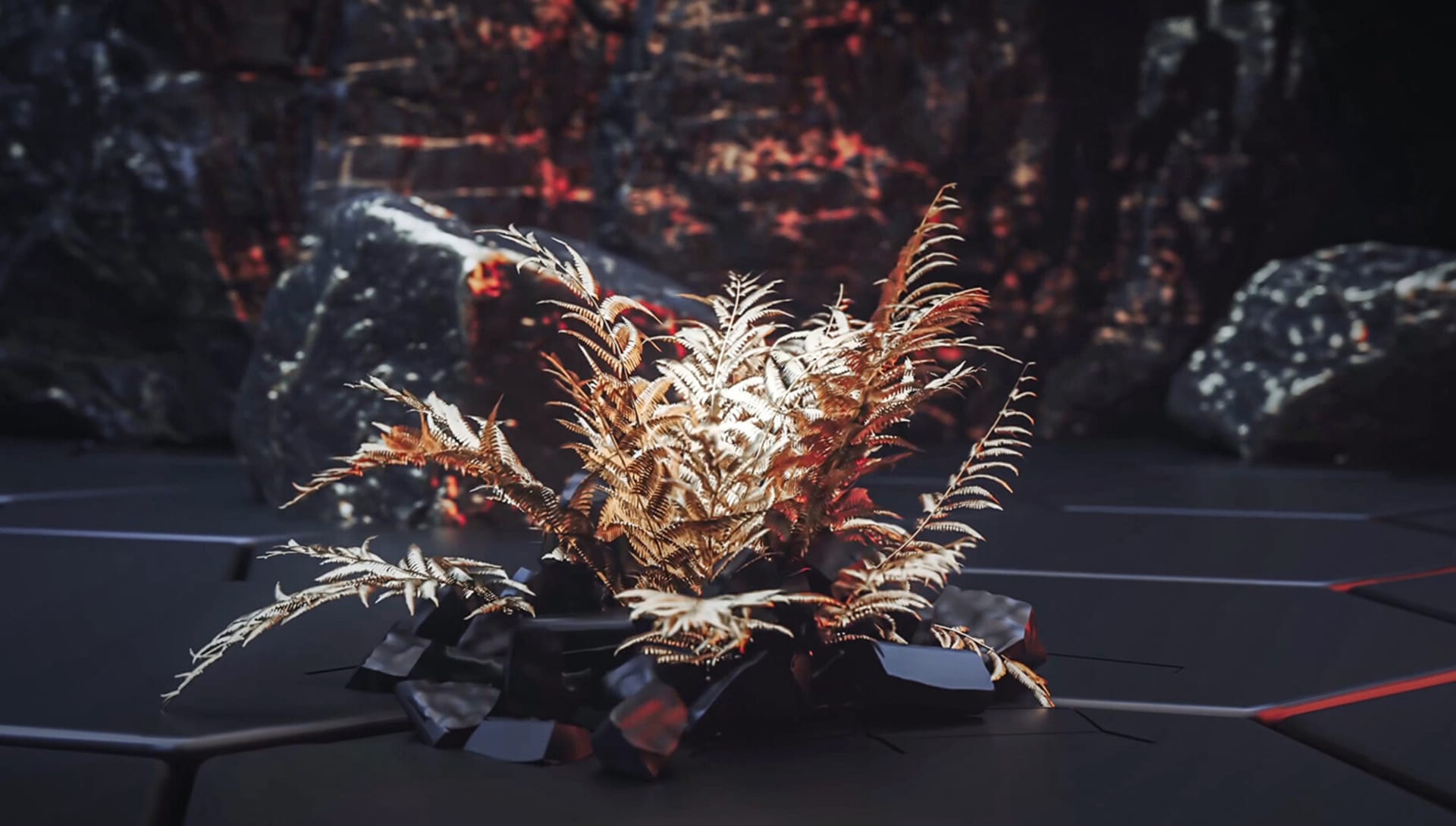
You shared that you enjoy the process more than the final product. What stage is your favorite?
I like to make something that challenges me either creatively or technically. Exploring the different solutions or developing different designs is an interesting part for me. The most rewarding feeling is when I overcome these obstacles and when I can see that the project is starting to shape up nicely. Whether it’s that I finally found a way to model that weird rattan chair or that I finally found a good camera angle or light direction.
Once the project is posted and done, I'm happy about it for a few days, then I start noticing the things that could have been better, and then I just want to forget about it and move on to the next project. That might sound a little depressing, and I have been thinking a lot about how to change it or whether that mindset is harmful to me, but I have come to the conclusion that it's really what makes me stay humble and what drives me forward as an artist, as long as I don't turn self-criticism into self-hatred. I also think that it’s quite common among artists to feel this way and that it's part of the artistic journey. With that being said, when I look back on where I started 5 years ago, I'm proud of my journey and the hard work that I've put into it.
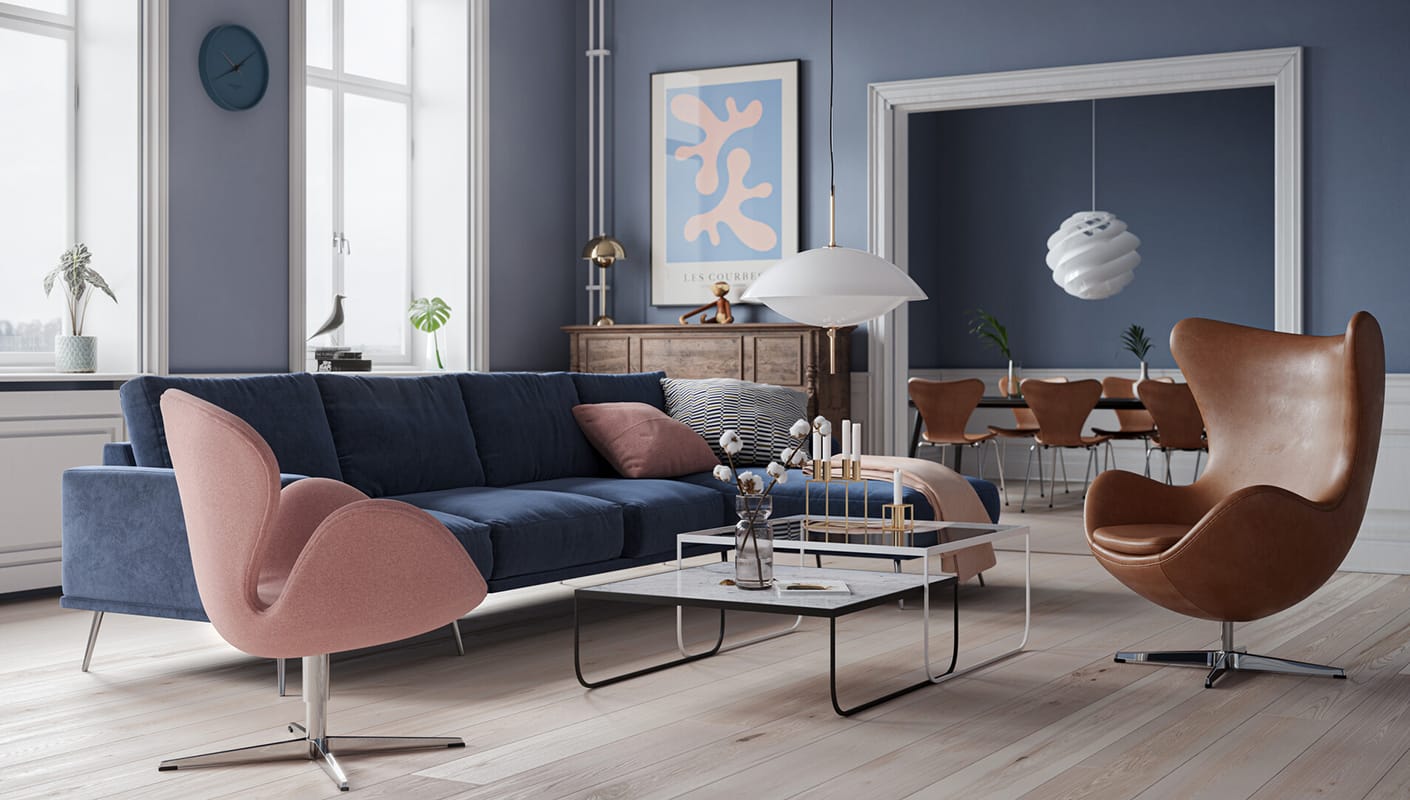

© Emil Rasmussen
What is the story behind your motion design project Shaping the Extraordinary?
Inspired by my apprenticeship at Fritz Hansen, Obviously, I wanted to convey a story that shows the fine craftsmanship of the Series 7 chairs in an abstract and hopefully elegant way. It shows how it goes from a tree in nature to the workshop and how it's sliced into veneer pieces and put together and ends up in a living room. A real cabinetmaker would probably argue that the things happening in the project are not exactly in chronological order, but the important part is that the viewer gets the gist of it and gets to feel how the extraordinary design is ‘shaped’ up.
I also chose to do this project because it could be fun to present something different to my colleagues at Fritz Hansen compared to the marketing material we usually do. It’s a personal project, and Fritz Hansen is, therefore, not officially associated with it in any way.
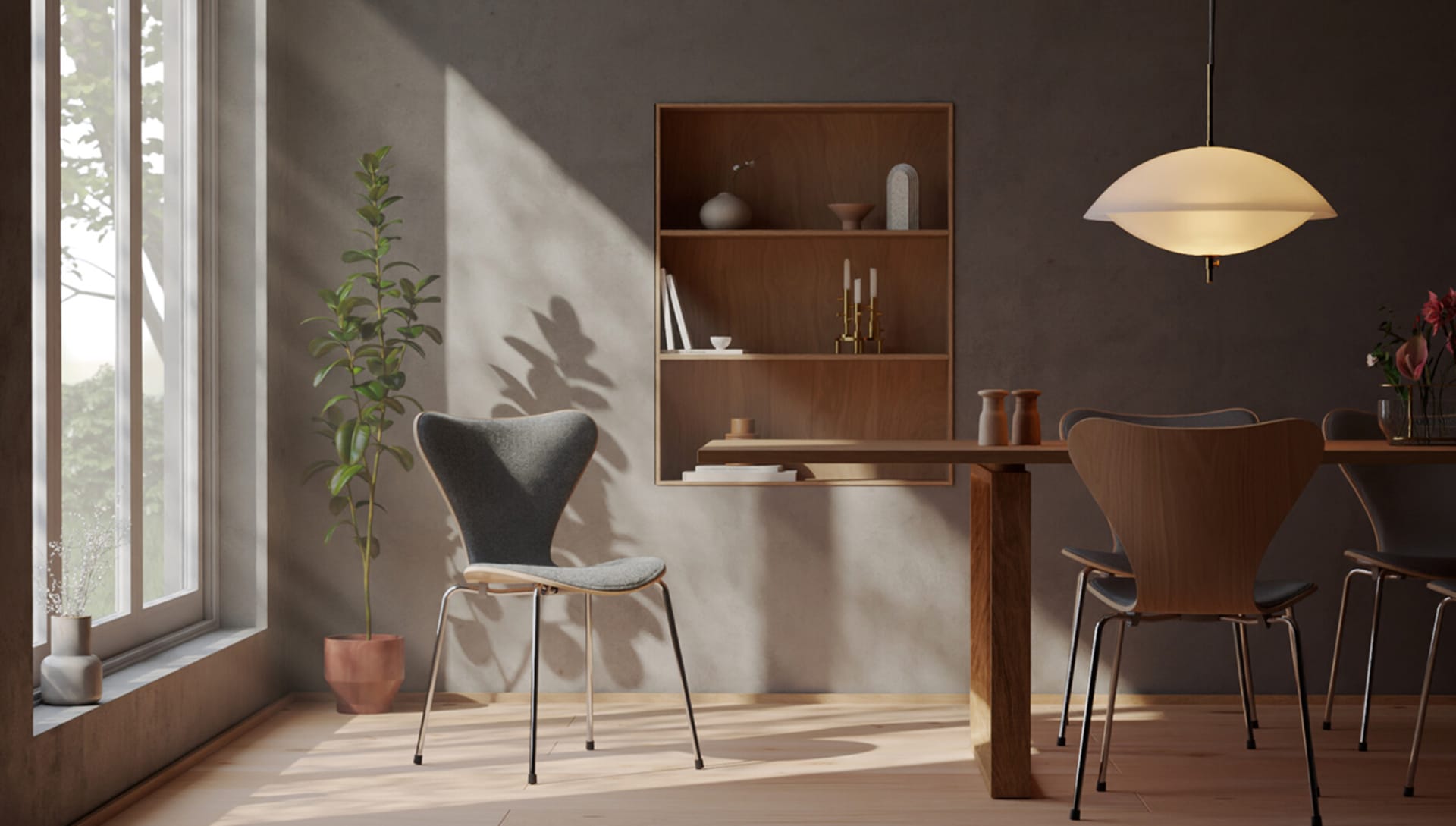
What role did V-Ray play in its creation?
V-Ray has served as my go-to render engine for years now. V-Ray is a reliable and flexible tool and has therefore been paramount in creating this project. At the school, we had access to a powerful 3080 Ti GPU, and without V-Ray GPU rendering, I simply wouldn't have been able to render it before the five-week school period was over.
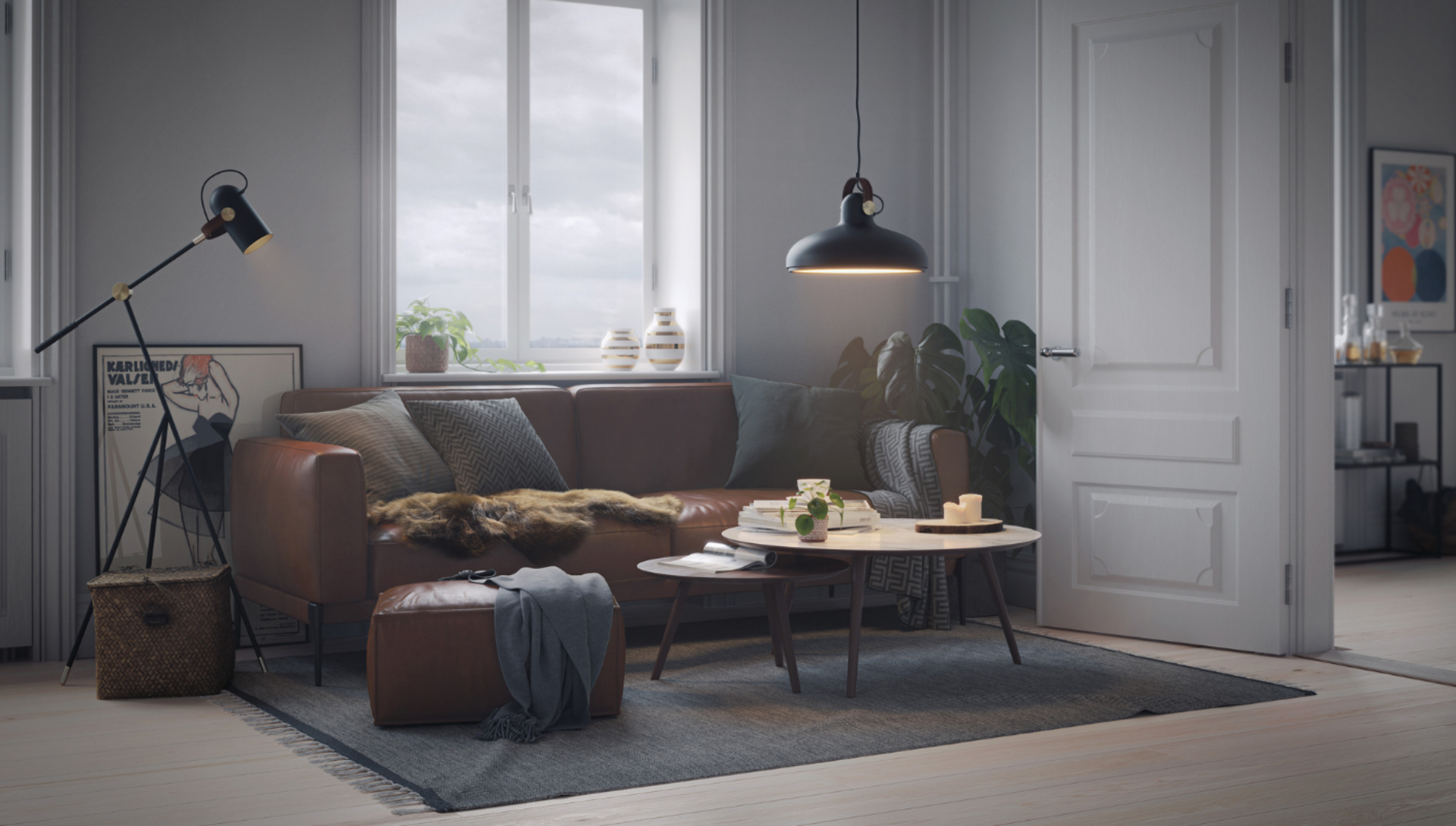
What is working as an apprentice at Fritz Hansen like? What are your responsibilities and tasks on a typical day?
I’m part of the space design team at Fritz Hansen, and, despite the name, it has nothing to do with sci-fi! We are responsible for designing the layout and colors of stores, fairs, events, and bigger commercial projects. I support the team by visualizing the designs to help sell the project. I also help develop our 3D workflows by modeling new products and setting up systems that allow for easier use of our 3D. It’s an amazing team, and I continue to learn a lot about interior design, colors, and design. I thoroughly enjoy working with my colleagues.
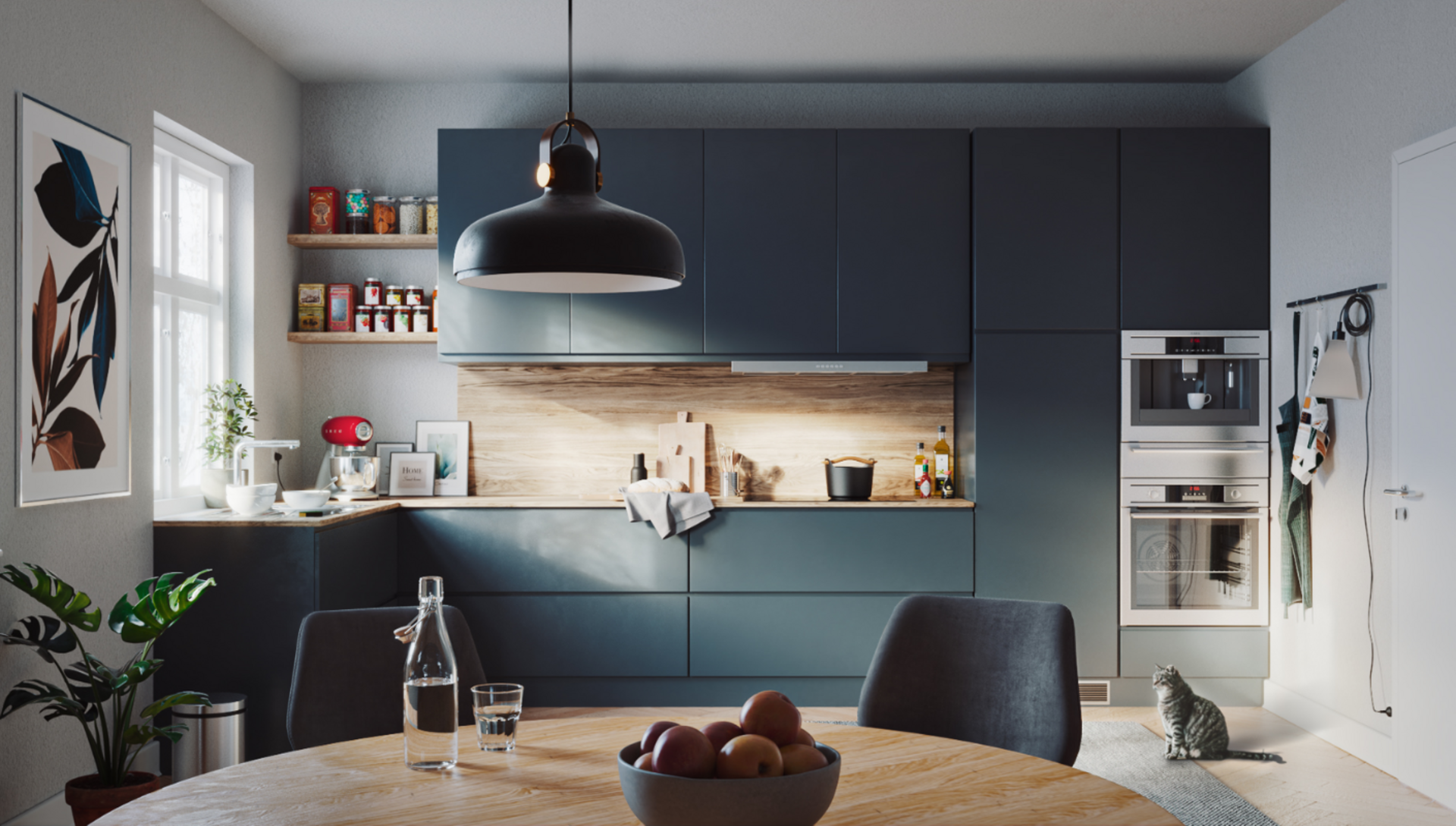
Is that where you met Lisa Jørgensen? How did she become your mentor?
Lisa Jørgensen and I attended the same school, 3D College Denmark. She was an apprentice herself at Fritz Hansen and was eventually hired there. When they needed an extra set of hands in the department, she reached out to me. She offered the opportunity to help them develop 3D files of their new products, and that eventually landed me an apprenticeship. An opportunity that I'm very grateful for.
Lisa and I are the only 3D artists there, so we have a lot of responsibility and freedom to develop things and shape the workflow, which I really enjoy. Lisa is not only my mentor, but I also consider her a very good friend. I couldn’t ask for a better mentor and colleague.
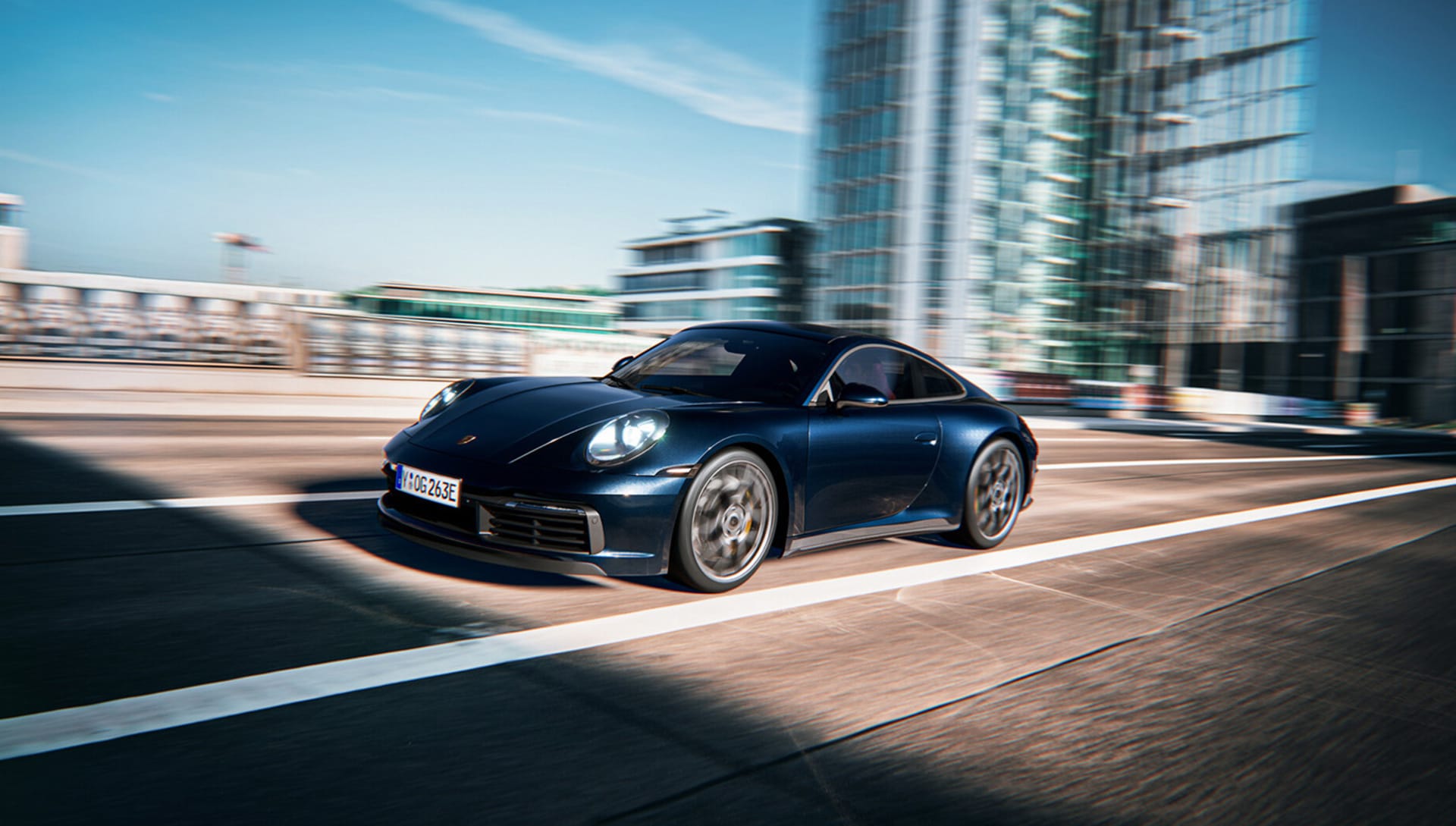
Describe a complex 3D project you worked on. How did you overcome the challenges?
The most challenging project I have made is the Dark Souls project I made with my friend Narcis Calin. As I stated earlier, I like to challenge myself and break out of my comfort zone. So we decided to do a full 3D animation of a medieval environment based on the Dark Souls video game.
None of us had much experience with this, so we had to learn so much new stuff. Like how to sculpt old damaged ruins, working with Udims and large texture sets, fire simulation, and compositing. It was not like my typical archviz projects; it was a huge project, and we worked really hard for four months, many hours every week after work. It was pretty crazy!
Looking at it now, there are obviously a lot of things that could be better, but I'm super proud of the whole process, and I think it really elevated both Narcis’ and my skill level. Narcis has gone on to launch a career in making these fantasy environments for big animation studios. I’m quite proud of him!
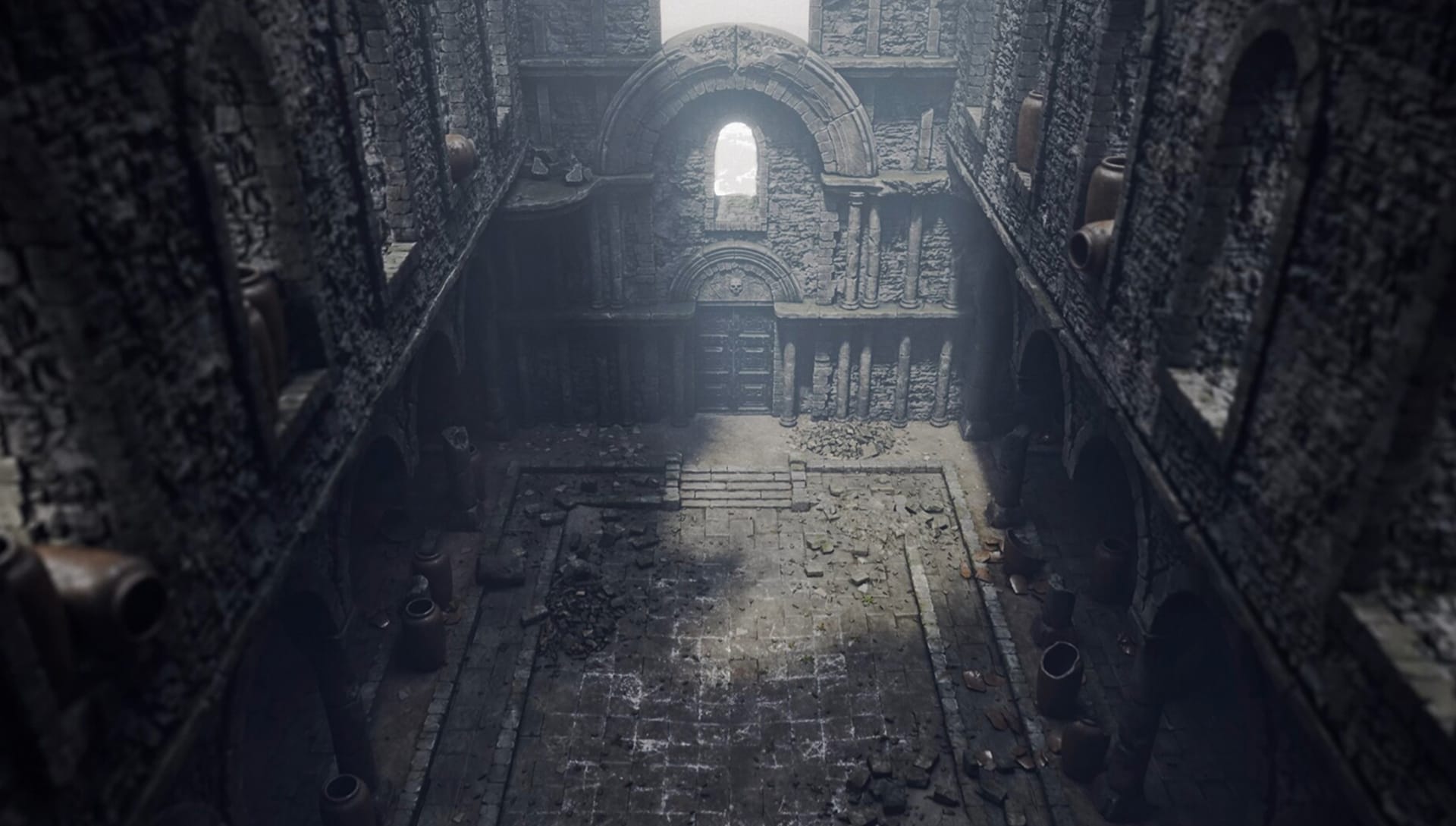
If you could give a single piece of advice to someone wondering whether to pursue a career in 3D, what would it be?
Well, it would be easy for me to say, “Just do it,” because I find it so fun and exciting. I would suggest trying it out, 3D has never been more accessible. 3ds Max has free student licenses, V-Ray offers 30-day trials, and there is open-source software like Blender out there. There is so much good and free learning material online to dive into.

What projects do you have lined up next?
My next big project will be the final exam project that will hopefully lead me to graduate this summer. Once again, I'm going to challenge myself and do a VFX shot that involves rigging and animation, and more heavy compositing than I have done previously. We are often told that it’s better to focus on one discipline, like archviz, and then master it, but I'm simply too curious not to explore other fields and challenge myself. I don’t want to reveal too much about the project, but follow my socials to see how it turns out.

